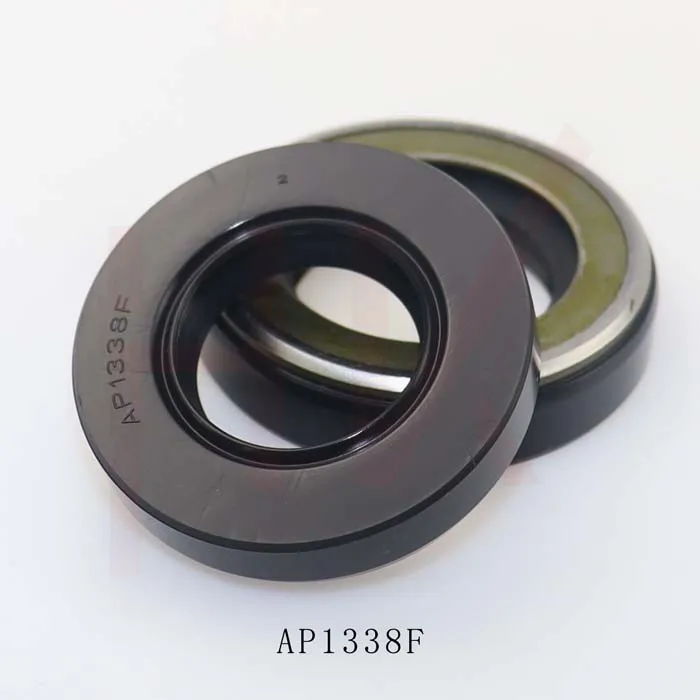Dec . 03, 2024 15:36 Back to list
hydraulic cylinder seals
Understanding Hydraulic Cylinder Seals Key Components of Hydraulic Systems
Hydraulic systems are crucial in various industries, ranging from manufacturing to construction, where they provide the necessary power to operate machinery and perform heavy lifting tasks. A critical component of these systems is the hydraulic cylinder, which converts hydraulic energy into mechanical force. However, the efficiency and longevity of hydraulic cylinders largely depend on the quality of the seals used within them. In this article, we will delve into the importance of hydraulic cylinder seals, their types, functionalities, and maintenance tips.
Importance of Hydraulic Cylinder Seals
Hydraulic cylinder seals are vital for preventing fluid leakage and ensuring the proper functioning of hydraulic systems. They play a crucial role in maintaining the pressure and performance of hydraulic cylinders, which can operate under extreme conditions, including high pressures and varying temperatures. A well-functioning seal prevents hydraulic fluid from escaping, which not only conserves energy but also protects the environment from potential fluid leakage.
Leaks can lead to decreased efficiency, increased operational costs, and even catastrophic system failures. Therefore, keeping hydraulic cylinder seals in top condition is paramount for any operation that relies on hydraulic machinery.
Types of Hydraulic Cylinder Seals
There are several types of seals used in hydraulic cylinders, each designed to meet specific operational requirements
1. Dynamic Seals These seals are designed to handle the movement between surfaces, such as the piston and cylinder wall. Common dynamic seals include O-rings, lip seals, and U-cups. O-rings are widely used because of their simplicity and effectiveness, while lip seals are designed to provide better performance at higher speeds and pressures.
2. Static Seals Unlike dynamic seals, static seals are used in areas that do not experience movement, such as between the cylinder head and the cylinder barrel. These seals ensure that there is no fluid leakage at the joints. Gaskets and O-rings are popular choices for static sealing applications.
3. Rod Seals These seals are specifically designed to prevent hydraulic fluid from leaking where the piston rod exits the cylinder. Rod seals must withstand the wear resulting from continuous motion and ensure a tight fit.
4. Piston Seals Positioned inside the cylinder, piston seals prevent fluid from bypassing the piston, ensuring it can effectively transmit force. Piston seals are vital for maintaining proper pressure within the system.
Material Considerations
hydraulic cylinder seals

The choice of material for hydraulic cylinder seals is crucial for their performance and lifespan. Common materials include nitrile rubber, polyurethane, and fluorocarbon. Each material has its advantages and limitations depending on factors like temperature resistance, chemical compatibility, and wear resistance.
Nitrile rubber is often the preferred choice due to its excellent mechanical properties and resistance to oil, while polyurethane is known for its durability and resistance to abrasion. On the other hand, fluorocarbon seals offer outstanding chemical resistance, making them suitable for harsher environments.
Maintenance Tips
To ensure the longevity and performance of hydraulic cylinder seals, regular maintenance is essential. Here are some best practices
1. Regular Inspection Routinely check seals for signs of wear, damage, or leaks. Early detection can prevent more significant issues down the line.
2. Fluid Quality Use high-quality hydraulic fluid and replace it as recommended. Contaminants can cause seal degradation over time.
3. Environment Control Protect seals from extreme conditions, such as excessive heat or cold, to reduce the risk of material failure.
4. Proper Installation Ensure seals are installed correctly according to manufacturer specifications. Improper installation can lead to premature wear or failure.
5. Debris Prevention Keep the work environment clean to prevent dirt and debris from entering the hydraulic system, which can damage seals and other components.
Conclusion
Hydraulic cylinder seals are indispensable components that significantly contribute to the overall efficiency and reliability of hydraulic systems. By understanding their types, materials, and maintenance needs, operators and maintenance personnel can ensure that these critical elements perform optimally, leading to enhanced productivity and reduced operational costs. In an industry where every drop of hydraulic fluid counts, investing in high-quality seals and regular maintenance is a smart move for any business relying on hydraulic machinery.
-
Unlocking the Potential of Hydraulic Systems with Essential Sealing Solutions
NewsAug.06,2025
-
Unleash the Power of Your Hydraulic Systems with Our Premium Seal Kits
NewsAug.06,2025
-
Specialized Hydraulic Seal Kits for Breakers, Pistons, and Presses
NewsAug.06,2025
-
Revitalize Hydraulic Systems with Premium Repair and Seal Kits
NewsAug.06,2025
-
Fortify Your Cylinders with Premium Sealing Solutions
NewsAug.06,2025
-
Elevate Hydraulic System Reliability with Specialized Seal Kits
NewsAug.06,2025
-
TCN Oil Seal Metal Ring Reinforcement for Heavy Machinery
NewsJul.25,2025
Products categories
















